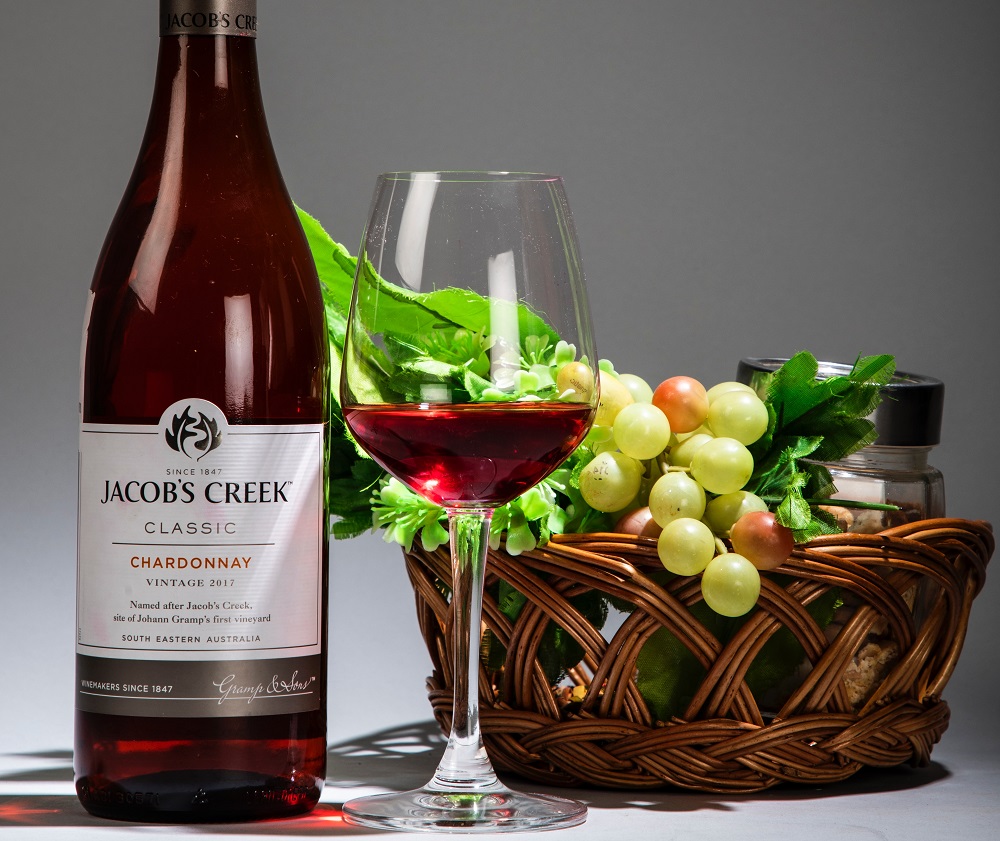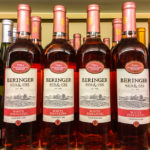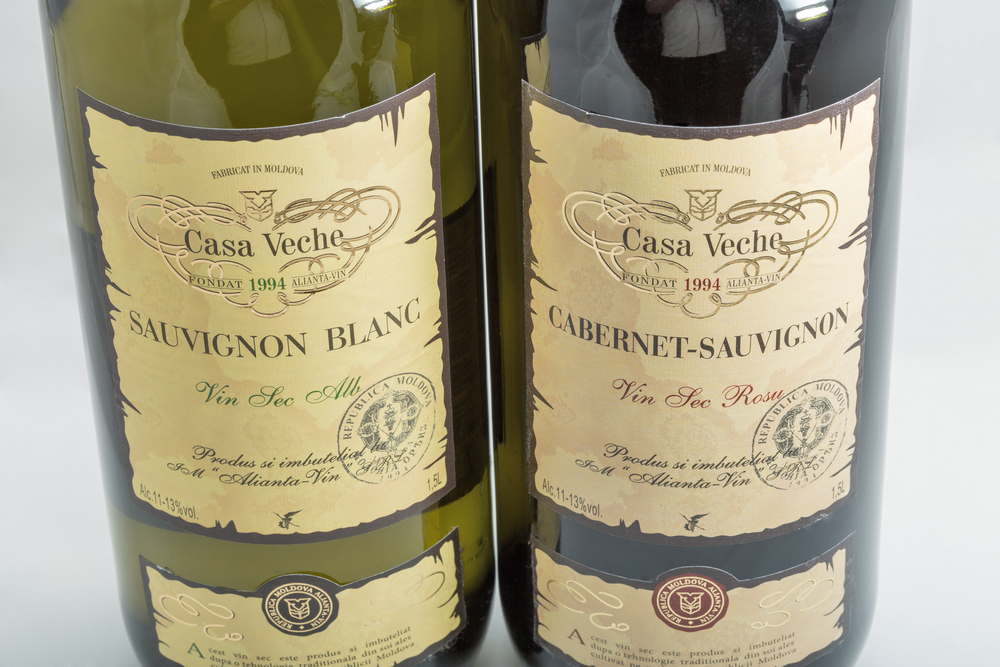Fruity is not a proper classification of wine. The main types are red, white, rose, sparkling, and fortified or dessert wines. Wines that fall into any of these categories can also be classified as fruity.
Fruity wines are referring to the flavor profile of the drink. This is mainly dictated by the grape variety used to make the wine and the manner in which the drink is aged.
Typically, wines with stronger fruit tones are those with younger vintages. These are often referred to as ‘fruit forward’ wines.

A wine with fruity flavors is not necessarily a sweet wine. The best way to judge the sweetness of your bottle before you drink it is to look at the alcohol by volume (ABV) content.
Generally speaking, sweet wines will have an ABV of 12% or lower. Higher ABVs than this typically means that the wine is dry and not sweet.
Fruity wines are often recommended as a starting point for novice wine drinkers. The flavor profile tends to be more mild and sweet, allowing the drinker to become acclimatized to drinking wines.
That being said, dry fruity wines will have more acidic and bitter flavors, so choose carefully.
Fruit wines will typically have lighter bodies and lower tannin contents than other wines. They begin to grow in popularity between summer and autumn.
Chardonnay
Chardonnay is a white grape that can adapt to a huge number of different climates, making the flavors and aromas of the wine hugely variable. Chardonnay grapes can be found growing in Burgundy, New Zealand, Australia, South Africa, California, and Chile.
Chardonnay grapes have apple aromas. They are also noted to have tones of honeysuckle, tropical fruit, and melon. Some Chardonnay is aged in oak. This gives the wine notes of grape and vanilla, toast, or toffee.
Chardonnay should be served at a temperature of 48 degrees Fahrenheit (9 degrees Celcius). It is an ideal wine for buttery or creamy dishes, meaty fish, poultry, and pork.
Merlot
Merlot is one of the most popular red wines in the world and is the second most popular wine in the United States. The word Merlot comes from the French for little blackbird.
Some commonly noted flavor tones in Merlot wines are blackberries, black cherries, cocoa, vanilla, plum, cedar, and cloves. A bottle of Merlot will typically have an alcohol content of between 13 to 14.5%.
The higher alcohol content wines are found in warmer climates, and vice versa.
The ideal serving temperature for Merlot wines is between 60 and 65 degrees Fahrenheit (15.5 to 18.3 degrees Celcius). It is a very versatile wine and will pair beautifully with a wide range of foods. White and dark meats, pasta, pizza, and burgers are great choices.
Moscato
Moscato wines are also referred to as muscat, muscadel, and moscatel. It is a sweet, fruity, Italian wine. The prominent flavor notes are peaches, lemon, mandarin oranges, pear, honeysuckle, and orange blossom. This is made using one of the oldest wine grapes in the world.
This is a lightly sparkling wine with a low alcohol content of around 5.5% ABV. Moscato wines are the perfect drink to pair with Asian foods. Anything with a high aromatic content (cinnamon, ginger, cardamom, chili pepper) will benefit greatly from a Moscato wine pairing.
Moscato wines should be served chilled. The ideal temperature range is between 43 and 46.5 degrees Fahrenheit (6 and 8 degrees Celcius).
Pinot Grigio
This is another hugely popular white wine. It is relatively dry and acidic with a lot of citrusy tones. It originates from France and is believed to be a genetic mutation of the Pinot Noir grapes.
In the 1300s this wine was introduced to Switzerland where it became a firm favorite of the Emperor.
These grapes are mostly produced in northeastern Italy (Trentino-Alto Adige, Veneto, and Friuli-Venezia Giulia). They have also been grown in Burgundy. Pinot Grigio is ideally served at a temperature of 45 to 49 degrees Fahrenheit (7.2 to 9.4 degrees Celcius).
Typically, Pinot Grigio wines have tones of peach, pear, grapefruit, lemon, and green apple. Some people also notice undertones of honeysuckle. It is a versatile wine that can be paired with a variety of dishes.
Good pairings include white meat, delicate seafood, green salads, and mozzarella. Fuller-bodied Pinot Grigios are perfectly served with creamy sauces, swordfish, veal, smoked cheese, and caramelized onions.
Pinot Noir
These are fruity red wines, although they do not tend to be particularly sweet. The grapes used to produce Pinot Noir date all the way back to Ancient Rome. Pinot Noir is a light-bodied red with a flavor variance according to the production and growing region.
Most American Pinot Noir comes from California, giving these wines a vanilla flavor. This is because they are aged in French Oak barrels. The original region for Pino Noir is Burgundy in France.
These wines are much earthier in flavor. The fruity notes in these wines are reminiscent of red fruits such as cranberries, red cherries, and raspberries.
Pinot Noir is a perfect accompaniment to fatty fish, such as salmon, roast chicken, and pasta dishes. The ideal serving temperature for this wine is between 50 and 55 degrees Fahrenheit (10 to 12.7 degrees Celcius).
Port
There are 8 sub types of port, a type of fortified wine from the Douro valley in Portugal. These are ruby port, tawny port, white port, rose port, vintage port, late bottled vintage port, crusted port, and Garrafeira.
Port wines are typically quite sweet and tend to be served as a dessert wine. They are similar to Riesling wines, the main difference being that Riesling is traditionally made with white grapes but port is typically made with red grapes.
Port wines undergo a process known as fortification too, where brandy is added during fermentation. This can mean that port wines have an ABV of up to 20%, making them the most alcoholic of all the wines.
The flavor profile of port wines is most notably berries, often a combination of prunes, blueberries, and raspberries. Some aged ports have tones of hazelnut, butterscotch, and almond. These wines are traditionally served with cheeses.
Most ports should be served at 55 to 58 degrees Fahrenheit (12.7 to 14.5 degrees Celcius), although young ruby ports and vintage ports should be served between 60 and 64 degrees Fahrenheit (15.5 and 17.7 degrees Celcius).
Riesling
This category of wines has a huge range found within it.
Riesling wines can be very dry or very sweet, full-bodied or light-bodied.
Their aromatic profiles can be anywhere from petroleum and rubber to spicy ginger or sweet honeycomb notes.
Riesling wines tend to contain a combination of a number of fruits. Commonly chosen options (aside from grapes) are citrus, apricot, mango, green apples, guava, and peach.
This gives all Riesling wines a lot of fruity flavor tones that will be adored by beginners and professional wine drinkers alike.
The grapes for Riesling wines are grown in cooler climates with slate soils. They can be grown in France, Germany, Australia, New Zealand, and the United States.
The grapes were traditionally found along the region of the Rhine River. There are 4 main categories of Riesling wines – sweet, dry, semi-sweet, and sparkling.
Riesling is perfectly paired with spicy foods, such as Thai curries, stir-fries, and schnitzel. It is also great with cheese courses, roasted vegetables, and fruity flavors. It should be served at a temperature of about 47 degrees Fahrenheit (8 degrees Celsius).
Sauvignon Blanc
This is another staple white wine. The grapes for these wines are grown across the world and can thrive in a huge variety of climates.
These include the Loire Valley in France, New Zealand, Chile, South Africa, Moldova, Australia, and the United States.
Sauvignon Blanc grapes are one of the 2 parent grapes for Cabernet Sauvignon wines.
The New Zealand Sauvignon Blanc wines are very limey in flavor. Other classic flavors seen in Sauvignon Blanc wines include gooseberry, honeydew, grapefruit, passion fruit, and white peach.
It is also said to have a number of green and herbal undertones.
Sauvignon Blanc wines should be served at a temperature of between 45 and 55 degrees Fahrenheit (7 to 12 degrees Celcius). It is a great wine to serve with herby sauces, tofu, chicken, fish, creamy cheeses, Thai, and Vietnamese foods.
Trerè Arlùs Albana Secca
This is an Italian white wine from the Trerè farm, an active vineyard since the early 1960s. The vineyard is located in the northeastern region of Italy, in a place known as Emilia-Romagna.
The grape variety used in this wine is 100% Albana grapes, grown in an east/southeastern climate. The wine has an alcohol content of 14% by volume. The wine has fruity, peachy notes.
This wine should be served between 50 and 54 degrees Fahrenheit (10 to 12 degrees Celcius). It is perfect when served with white meats, fish, appetizers, and risottos.
Zinfandel
This is grown and produced in California, thanks to the hot climate. The grapes are not picked until they are about to burst, giving the wine a strong jammy and berry flavor. Some people also say that the wine has spicy notes.
These wines typically have an alcohol content of between 14 and 17%, higher than most other unfortified wines. Zinfandel wines are made using red and white wine grapes, licorice, cranberries, and plums.
Zinfandels should be served between 60 and 65 degrees Fahrenheit (15.5 to 18.3 degrees Celcius). They are perfect when paired with spicy foods, Thanksgiving dinners, and barbeques.
- Shrimp Cocktail (and More) Wine Pairing Guide - 09/06/2022
- What Wine Serving Sizes Look Like: Standard Size and More - 08/06/2022
- How Much Sugar is in Wine: Glass and Bottle Sugar Content - 08/06/2022






